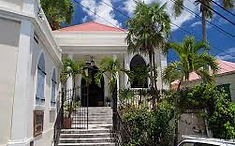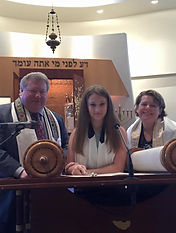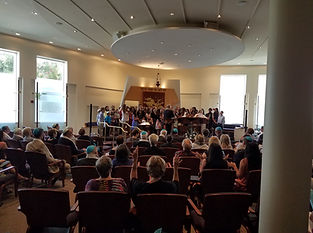A Tradition Develops Over Time
The term Bar Mitzvah literally means “son of the commandment.” The term indicates the coming of age for a Jewish young person.
Centuries ago, the age of 13 was determined to be the age of accountability for Jewish boys. The Talmud tells us that “until the 13th year, it is the father’s responsibility to raise his son.” After that the father must say: ‘Blessed is God, who releases me from punishment for this one!’” (The father is no longer culpable for misdeeds the son may make.)
The ceremony marking this coming of age, however, originated fairly late in Jewish history. There is no mention of such a ceremony in the TaNaKh or the Talmud. The first record of celebrating becoming bound by the commandments is from the 10th century C.E., and refers boys being brought forward for a blessing or communal prayer.
The Bar Mitzvah ceremony developed during the Middle Ages, but still consisted only of the 13-year old boy being called to the Torah, and required to read a small portion of the weekly Torah reading.
By the middle of the 15th Century the ceremony developed further, and by the 16th century many of the practices associated with the ceremony today are present: the Bar Mitzvah gave a lecture; was counted in the minyan (the minimum quorum of ten “adult” Jews required to hold a communal prayer service); presents are given; a new suit of clothes is purchased for the youngster; the Bar Mitzvah feast is large and given a lot of attention (so much so that some sources even contain complaints that the celebrations were getting out of hand.)
Equal Opportunities for Girls: The Origin of the Bat Mitzvah
In Jewish tradition, the age of responsibility for the commandments was said to have been 12 for girls, rather than 13, as it was for boys. Although there are some references to events called “Bat Mitzvah” in Europe in the 19th century, the first known Bat Mitzvah comparable to what we see today occurred in 1921. Rabbi Mordecai Kaplan (founder of the Reconstructionist movement of Judaism) scheduled a ceremony for his daughter Judith. She was called to the bimah, read the blessing before the reading of the Torah, read part of the Torah portion in Hebrew - although not from the Torah itself, and read the blessing after the reading of Torah. The Bat Mitzvah ceremony was born.
Today, in Reform synagogues, boys and girls celebrate this coming of age at 13, and, in the egalitarian spirit of our movement, what boys and girls are expected to do is identical.
.
Becoming Bar/Bat Mitzvah at Congregation Beth Israel (Link under construction.)
Resources
* Guide and Outline for a D'var Torah (Commentary on the Torah portion)
* Guide and Outline for Introduction to the Haftarah
* Haftarah Resource Sheet
Background about Haftarah: Definition,
Explanation, History, and How and Why Portions Were Chosen




